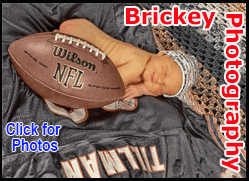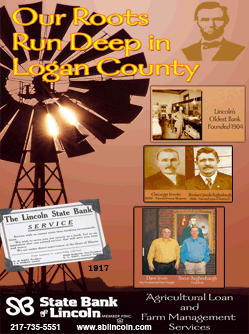 The event kicks off at 11 a.m. and runs to 4 p.m. The Vachel Lindsay
Repertory Group will perform selections from his poetry at 11:15. An
actress portraying Lindsay's mother, Catharine Lindsay, will also
appear. The event kicks off at 11 a.m. and runs to 4 p.m. The Vachel Lindsay
Repertory Group will perform selections from his poetry at 11:15. An
actress portraying Lindsay's mother, Catharine Lindsay, will also
appear.
During the afternoon, a poetry jam session will feature works
produced for a Vachel Lindsay contest sponsored by the literary
journal Quiddity.
Visitors will also get a chance to mingle with artist John
Webster and see his pen-and-ink drawings on display throughout the
home. Some of Lindsay's own artwork will be on display, too.
The event is sponsored by the Illinois Historic Preservation
Agency and the Vachel Lindsay Association.
The
Vachel Lindsay Home State Historic Site is open Tuesday through
Saturday from 10 a.m. to 4 p.m. for free public tours throughout the
day. The historic home is at 603 S. Fifth St., just south of the
governor's mansion.

___
A brief biography of Vachel Lindsay
Nicholas Vachel Lindsay, a major American poet, was born Nov. 10,
1879, at 603 S. Fifth St. in Springfield to Dr. Vachel Thomas
Lindsay and Catharine Frazee Lindsay. He graduated from Springfield
High School and studied at Hiram College in Ohio, the Chicago Art
Institute and the New York School of Art.
Lindsay made three famous walking tours of the United States in
1906, 1908 and 1912, covering more than 2,800 miles. On these
journeys, Lindsay traded poems for food and shelter, earning him the
title of "The Prairie Troubadour."
[to top of second column] |
 Lindsay was catapulted to fame with the 1913 publication of his
poem "General William Booth Enters Into Heaven." Two years later his
poem "The Wedding of the Rose and the Lotus," calling for tolerance
between Western and Eastern cultures, was printed by the U.S.
Secretary of the Interior and sent to both houses of Congress in
connection with the opening of the Panama Canal. His "Congo" and
"Abraham Lincoln Walks at Midnight" are well-known by generations of
readers.
Lindsay lectured at many universities, including Oxford,
Cambridge and the University of Illinois. He performed his poetry in
every state in the nation at the time.
In 1925 he married Elizabeth Conner of Spokane, Wash. Lindsay,
his wife and two children returned to his Springfield home in 1929,
where he died on Dec. 5, 1931.
Lindsay called himself a "rhymer-designer" and created drawings
to accompany his poems. He was a leading voice in the American "New
Poetry" movement, with a total published work of some 20 volumes of
poetry and prose. Lindsay and other major poets and artists of his
day championed a new language to express new subjects, such as civil
liberties, civic excellence, and humanitarian and aesthetic values.
He wrote poems of vehement protest against spiritual and
environmental blight.
Sinclair Lewis called Lindsay "one of our great poets, a power
and a glory in the land." Author, poet and Illinois native Carl
Sandburg said, "I rate (his poems) among the supremely great
American poems."
[Text from file received from the
Illinois Historic Preservation Agency] |